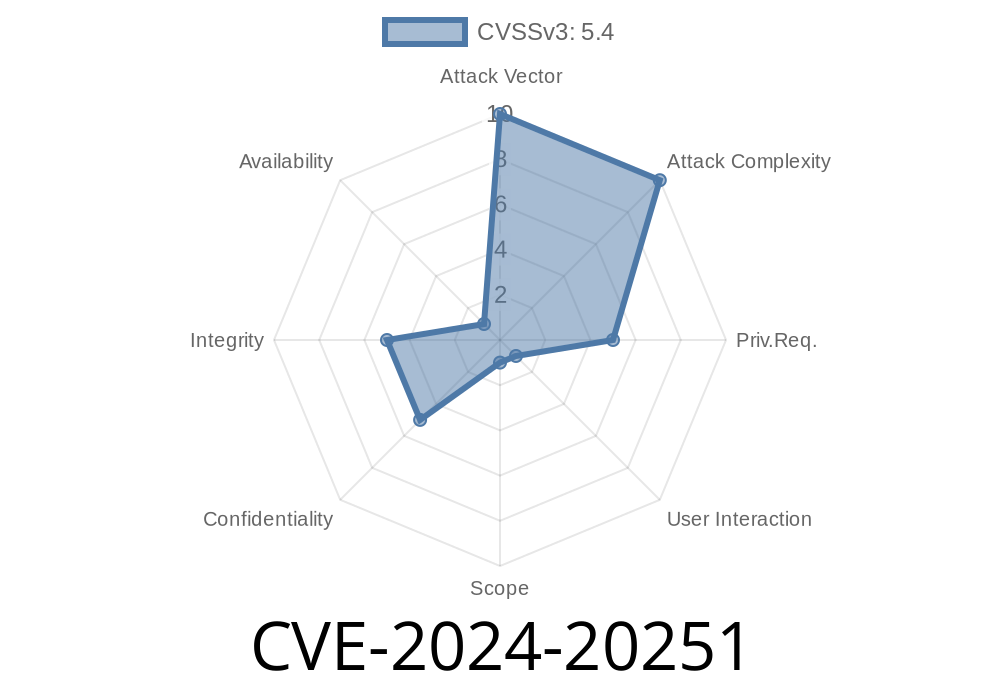A significant vulnerability (CVE-2024-20251) has been discovered in the web-based management interface of Cisco Identity Services Engine (ISE), which could allow an authenticated, remote attacker to carry out a stored cross-site scripting (XSS) attack against a user of the interface on an affected device. This vulnerability specifically results from the web-based management interface's failure to properly validate user-supplied input.
Vulnerability Details
In this case, an attacker could exploit the CVE-2024-20251 vulnerability by injecting malicious code into particular pages of the interface. If successful, the attacker would be able to execute arbitrary script code in the context of the affected interface or access sensitive, browser-based information.
For those interested in gaining a deeper understanding of this vulnerability, detailed references are linked below:
1. Cisco Security Advisory - Vulnerability in Cisco ISE
2. NVD - CVE-2024-20251
Code Snippet
The following code snippet demonstrates a potential method for exploiting the CVE-2024-20251 vulnerability:
<script>
// Malicious code to be executed when the vulnerable page is loaded
alert('XSS Attack');
</script>
When an attacker injects this script into a specific page of the Cisco ISE web-based management interface, any user loading that page will trigger the code execution, enabling the attacker to execute arbitrary scripts or access sensitive information from the user's browser.
Exploit Scenarios
To better understand the real-world consequences of the CVE-2024-20251 vulnerability, consider these possible exploit scenarios:
1. An attacker could exploit the stored XSS vulnerability to gain unauthorized access to sensitive data in the Cisco ISE web-based management interface.
2. A malicious user who has already gained access to a user's credentials could exploit the vulnerability to escalate their privileges by executing arbitrary code within the context of the affected interface.
3. If executed successfully, the attacker could potentially hijack a user's session or redirect them to fraudulent websites to harvest additional user credentials or launch further cyber attacks.
Mitigations and Recommendations
Cisco has released software updates to address this vulnerability, and it is strongly recommended that users apply these updates as soon as possible. In addition, users should adhere to the following best practices to help protect their systems and networks from potential exploits:
- Regularly review and update security settings, patches, and configurations for all devices and applications
- Educate users about the risks associated with clicking on unexpected links or downloading unfamiliar files
Implement two-factor authentication (2FA) to secure user accounts and prevent unauthorized access
To stay up to date with the latest security vulnerabilities and patches, subscribe to Cisco's security advisories and alerts.
Timeline
Published on: 01/17/2024 17:15:11 UTC
Last modified on: 02/02/2024 16:15:53 UTC
